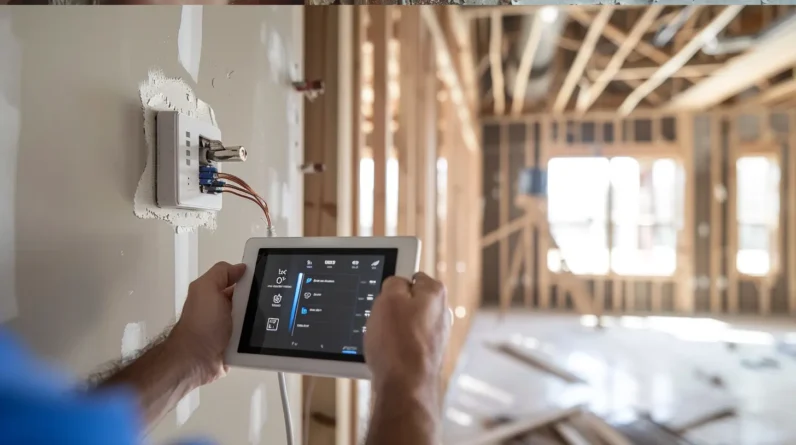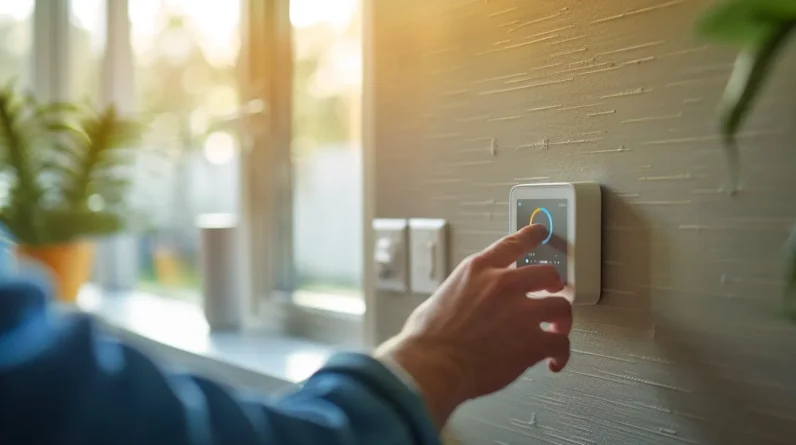
We’re seeing a shift in energy consumption with smart devices that streamline our lives and boast energy-saving capabilities. Smart thermostats and connected appliances can cut energy consumption by up to 30%. We’ve found that smart homes use 30-40% less energy on average. As we explore the benefits and limitations of smart energy devices, we’ll uncover when tech helps – and when it hurts – our energy efficiency efforts, and what that means for our wallets and the environment.
Smart Thermostats and HVAC Efficiency
As we explore smart thermostats and HVAC efficiency, we’ll examine how these devices optimize heating and cooling systems. They use algorithms to analyze runtime and adjust system operation, adapting to local weather and household preferences. Smart thermostats learn occupancy patterns and temperature settings, minimizing energy waste. We’ve found average savings of 8% on heating and cooling bills, with potential annual savings up to $200. ENERGY STAR certification verifies these claims through real-world data. By reducing unnecessary heating and cooling, smart thermostats can pay for themselves in under 2 years, making them a viable investment for energy efficiency.
Smart Plugs and Standby Power Reduction
We’ll focus on smart plugs, which play a crucial role in reducing standby power consumption. They consume about 1 watt in standby mode, with Wi-Fi variants using 1-2 watts daily. Smart plugs help reduce standby power draw from appliances by scheduling devices to switch off during inactivity. This can lead to significant energy savings, especially for devices typically left in standby for many hours daily. By enabling full disconnection, smart plugs mitigate standby consumption, which can represent a large proportion of total device energy use. They provide a practical tool to directly reduce wasted energy.
Real-Time Energy Monitoring Systems
Smart plugs are just one component of a broader strategy to reduce energy consumption – our focus now shifts to real-time energy monitoring systems, which offer a more thorough approach to energy management. We utilize IoT sensors to measure energy and environmental data, providing detailed insights into power usage. Cloud computing platforms analyze collected data, enabling advanced analytics and better decision-making. Real-time systems integrate with control technologies to optimize operations, identifying energy inefficiencies and allowing for immediate corrective actions, which can lead to significant cost savings and improved operational efficiency. This approach enhances our ability to manage energy effectively.
Impact of Smart Lighting on Energy Consumption
The impact of smart lighting on energy consumption is significant, and it’s an area where we’re seeing substantial reductions in energy use. We’re achieving this through smart LED bulbs that reduce energy use by approximately 83% compared to incandescent bulbs. Smart lighting systems enable advanced control functions like dimming and scheduling, contributing to further energy savings. Wireless control and sensor integration also minimize energy consumption. Additionally, electronic ballasts and solid-state components reduce energy losses. These features combined lead to notable energy savings, making smart lighting a key area for energy efficiency improvements. We’re reducing wasted energy and optimizing energy use.
Overall Energy Savings and Consumer Adoption
As energy efficiency continues to drive our adoption of innovative technologies, consumer investment in smart devices is on the rise. We’re seeing significant energy savings, with smart homes using 30-40% less energy on average. Smart thermostats and connected appliances can cut energy consumption by up to 30%. Globally, smart home automation saved 8.4 billion kWh of energy in 2025. We note that 56% of consumers adopt smart home tech for energy savings, and annual spending per user averages $2,500. This strong investment indicates that energy efficiency is a key driver of adoption, and we’re likely to see continued growth in this area.
Limitations and Potential Drawbacks of Smart Energy Devices
While we’ve seen significant energy savings from smart devices, several drawbacks need to be considered. We’re concerned about privacy and security risks, as smart energy devices collect user data, making them vulnerable to hacking. Additionally, accuracy issues, such as “phantom readings,” can lead to inflated bills. Environmental and health concerns, like electromagnetic radiation, also exist. We must weigh these limitations against the benefits, considering the potential drawbacks of smart energy devices, including cost and accessibility barriers, dependency on connectivity, and technical issues that can impede their effectiveness and efficiency. These concerns impact adoption and user trust.
Optimizing Smart Device Performance for Maximum Efficiency
To maximize efficiency, we’re optimizing smart device performance by implementing various techniques. We’re reducing API call frequency, caching data locally, and handling network failures gracefully to minimize power consumption. By utilizing cloud storage and managing memory, we free up local device space and improve performance. We’re also adjusting screen brightness, managing app permissions, and using battery saver modes to extend battery life. Regular software updates and maintenance tasks, such as disk cleanup, further enhance performance. These techniques help us optimize device efficiency, responsiveness, and overall user experience, ensuring our smart devices operate at their maximum potential.
Conclusion
We’ve seen how smart devices can boost efficiency, but it’s striking that a single smart thermostat can save up to 12% of heating and cooling costs. This translates to a significant reduction in energy waste, with the average household cutting around 1,200 kilowatt-hours annually, enough to power a fridge for 3 months.







